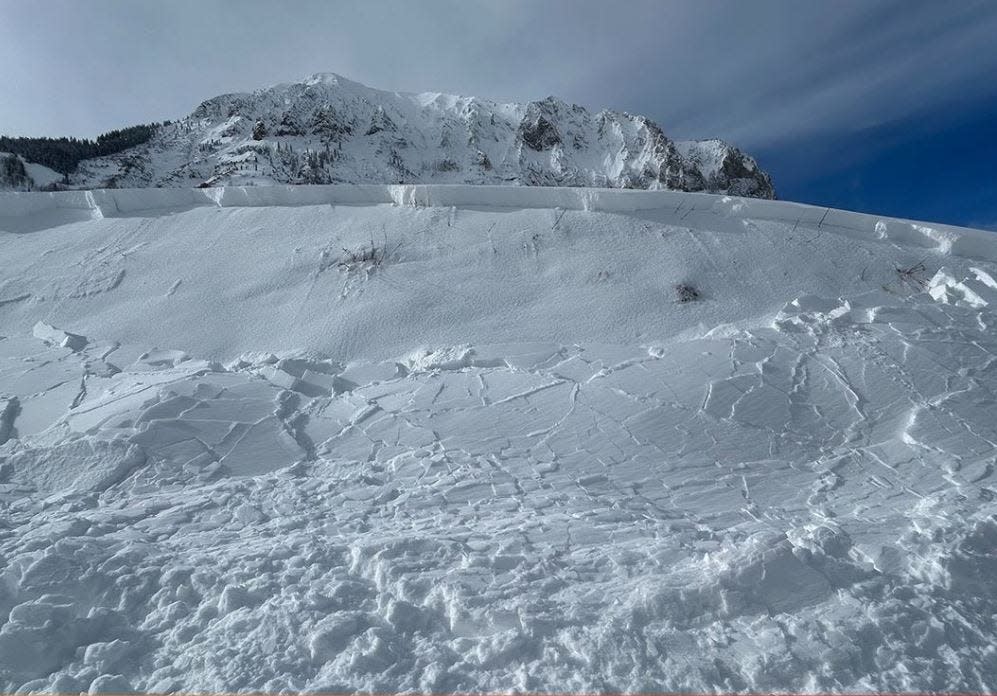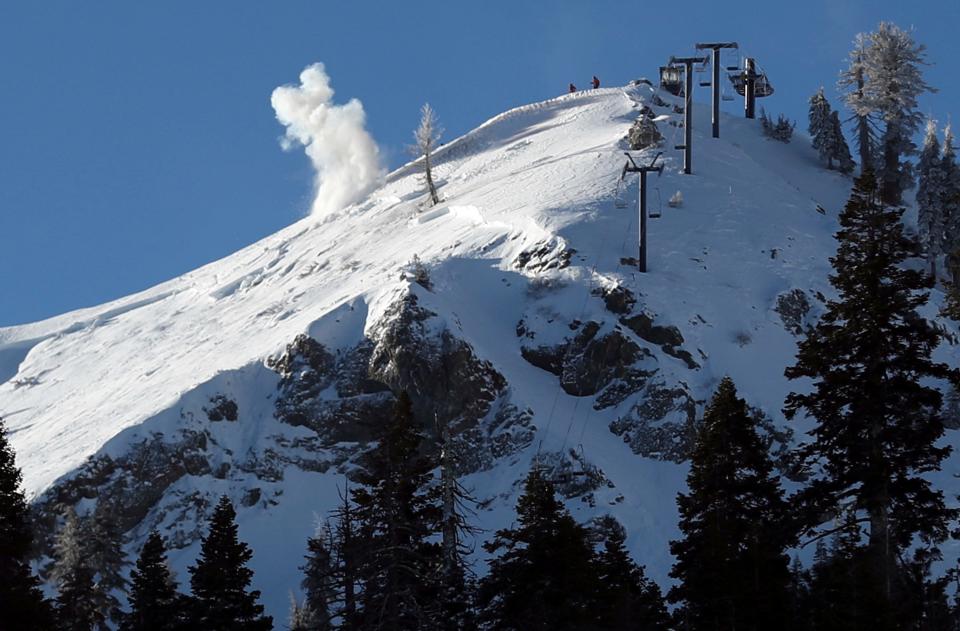As avalanches roar across Colorado, state officials warn against going in the backcountry

The number of avalanches that have rolled through Colorado over the past week alone make up a quarter of the total avalanches expected through the season, with dangerous conditions expected to continue in the coming days and weeks.
Colorado officials have issued several special avalanche advisories in effect through the weekend, warning the public of potentially dangerous conditions that extend from mountain tops to valley floors, according to the Colorado Avalanche Information Center.
The region, which accounts for one-third of all avalanche deaths nationwide since 1950, has seen about 905 avalanches since Thursday, Jan. 11.
Because conditions have been so touchy, anyone who is near a steep slope is at risk, avalanche information center spokeswoman Kelsy Been told USA TODAY on Thursday.
“So often, people think of avalanche terrain as kind of like, big mountain and high up, but we’re actually seeing avalanche activity on even small slopes along the Forest Service road slide, which are smaller kind of slopes," she said. "Because the avalanche activity is so widespread, we’re telling people that everyone needs to be aware."
This year's avalanches are piling up
Since the season began on Oct. 1, Colorado has experienced about 2,000 avalanches, Been said. Of those, the roughly 905 in the past week account for about 45 percent.
“A good chunk of the avalanches that have been recorded in the last week were a byproduct of the series of storms that came through around Martin Luther King Jr. weekend," Been said.
The number of avalanches is not surprising given the amount of snow that fell on the snowpack as a result of the recent storms. Officials knew it was “going to be really dangerous and cause a lot of avalanches," she said.
“We had a really dry period to start the season," she said. "This is kind of the first significant storm we have had since the dry spell. The snow was just really weak."
What makes the high number of avalanches reported this past week particularly hazardous is that they are occurring “at all slopes and at all elevations,” Been said.
What’s an avalanche anyway?
An avalanche is a mass of snow, rock, ice, or soil that cascades down a slope, according to the National Avalanche Center.
The phenomena, whether naturally occurring or human-triggered, accounts for an average of 25 to 30 deaths across the country annually, the Avalanche Center says. And one third of all avalanche deaths nationwide since 1950 have happened in Colorado, according to the Colorado Division of Homeland Security and Emergency Management.
Snow avalanches occur when an unstable “mass of snow breaks away from a slope, picking up speed and more snow as it moves downhill. The heap produces a river of snow and a cloud of icy particles that rises high into the air," according to National Geographic.
Factors that influence if and when an avalanche occurs are storminess, temperature, wind, steepness of the slope, terrain, vegetation, and general snowpack conditions, the magazine reported. Hazard levels are also assessed this way.
How many avalanches occur in Colorado annually?
About 3,600 avalanches occur each season, according to data from the Colorado Avalanche Information Center.
The number of avalanches that reportedly occur each year is based on reports collected by the center over the last decade. Not all of the avalanches that occur in Colorado are reported to the center or are seen by people.
“We try hard to document the number of people involved in avalanches, but there may be more people caught than we know about," Been said.
On average, she said there about six avalanche deaths in Colorado every winter, which is about 25% of the nation's total avalanche deaths a year.
More: 1 killed, 3 injured in avalanche at Palisades Tahoe ski resort, California officials say
What are some avalanche safety tips?

The best way to keep yourself safe anywhere from avalanches is by checking out the avalanche forecast before you head for the slopes. Conditions are updated daily and are broken down by region.
“The conditions may have been very dangerous across the state, but they weren’t the same across the state," Been said. "A lot of the state is still under an avalanche warning, which means that traveling in or under avalanche terrain is not recommended."
It's probably best to avoid the backcountry right now, if you don’t know how to properly identify avalanche terrain, Been said.
Here are some tips that will help you avoid avalanches, if you are headed into the backcountry this season:
"Avalanches are possible when you have snow on a slope steeper than about 30 degrees," according to the Colorado Avalanche Information Center.
"Most avalanches happen during or soon after a big snowstorm, period of strong winds, or during a thaw (rapid increase in temperature)," according to the center.
"Signs of higher avalanche danger include recent avalanches, cracking in the snow, and audible collapsing. Avoid traveling on or under similar slopes," the center says.
For more information on avalanches, visit the Colorado Avalanche Information Center.
Extreme cold is dangerous for your pets. Here's what you need to do to keep them safe.
This article originally appeared on USA TODAY: Colorado sees hundreds of avalanches, issues public warnings

